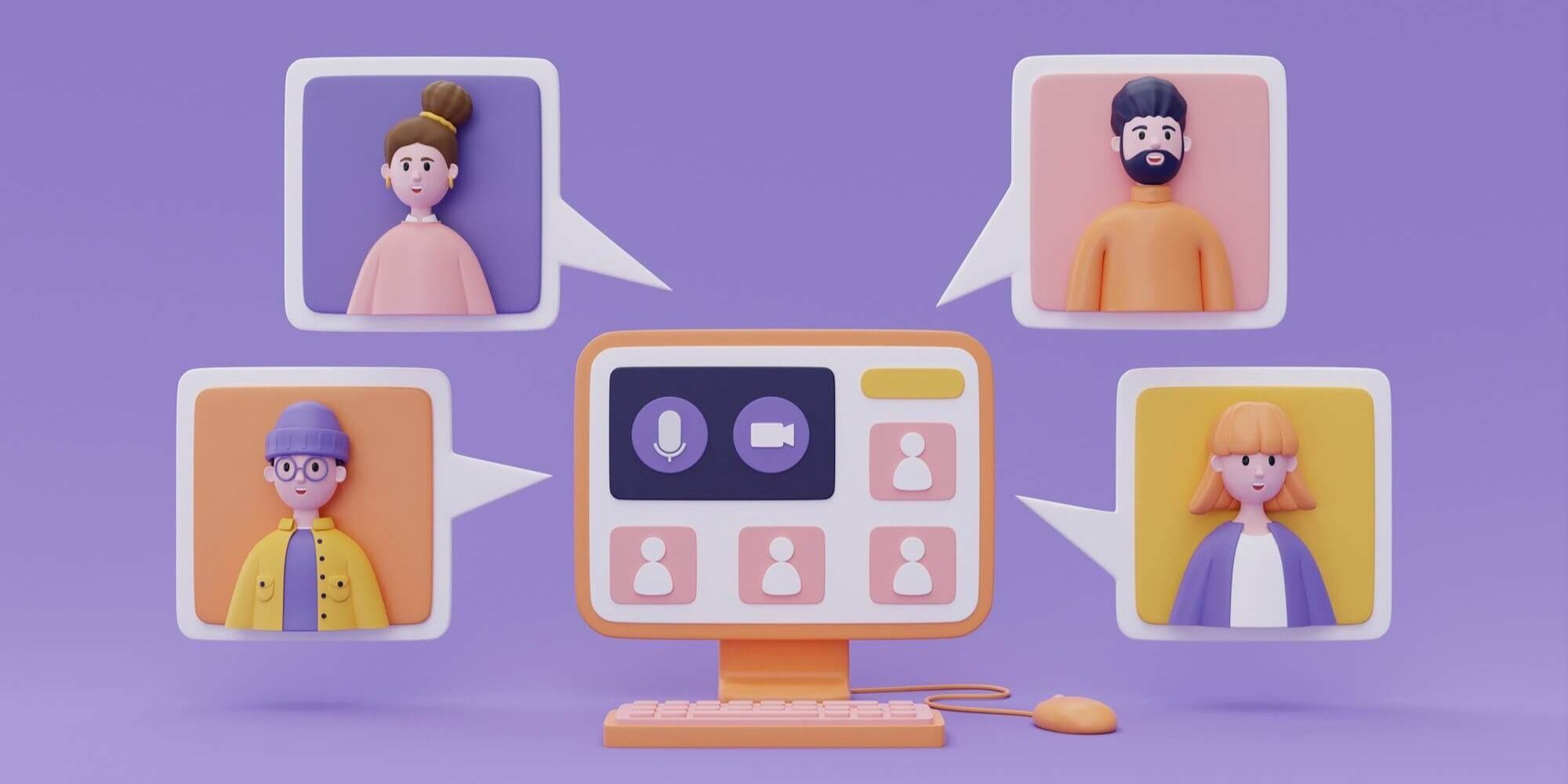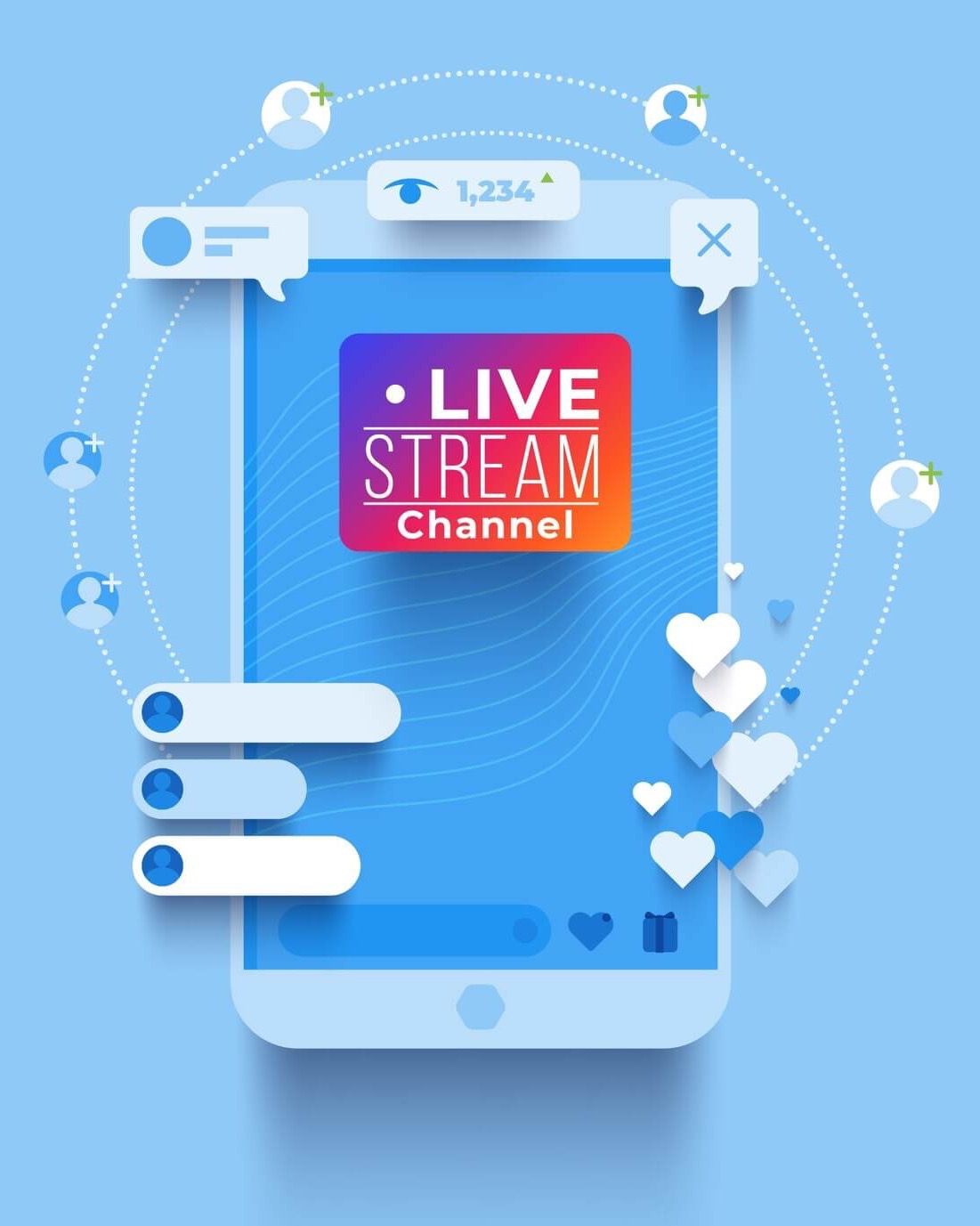Regardless of your business, you are undoubtedly aware that the growth and reputation of your company depend on your digital strategy. Today, it is essential to create and maintain a close relationship with your customers through a thoughtful and strategic online presence.
In a previous article, we covered the main aspects of an effective content marketing strategy, both for your website and your social media.
In this article, we reveal concrete examples to enrich your marketing strategy on social networks and enjoy maximum visibility.

What is a digital strategy?
A digital strategy is a coherent series of action plans deployed by a company on its various digital platforms.
It translates into a comprehensive communication plan based on multichannel digital marketing techniques.
Among these channels are:
- the website, a digital showcase for the company;
- the blog, a space for sharing expert content, advice and news;
- social networks, a place for building and exchanging with the company's virtual community;
- mobile applications and any other type of digital support that would facilitate personalized interaction with customers.
What is the purpose of a digital strategy?
The deployment of a digital marketing strategy has several objectives, the main one being to increase the visibility of the company and its offerings.
For example, the creation of digital content is an effective lever for customer acquisition, often synonymous with a better conversion rate, transforming visitors into customers.
By adopting an inbound marketing plan, you significantly increase your sales while maintaining a very limited budget. It is a preferred method for digital businesses due to its low cost and effective results.
Want to know more? Here are 5 good reasons to invest in an inbound marketing strategy.

How to implement a successful digital strategy?
The 6 key steps in brief
Monitoring market trends, adapting to user behaviors and analyzing the competition are the three key elements of any successful digital marketing strategy.
In essence, a good digital strategy is based on the:
- analysis and definition of your SMART objectives;
- in-depth knowledge of your target audience;
- research of relevant keywords and content creation;
- selection and optimization of digital distribution channels;
- monitoring of analytical data and key performance indicators (KPIs);
- optimization for search engines (SEO).
In detail...
To create high-performance digital content as part of a digital communication campaign, ask yourself these 6 essential questions detailed in an article dedicated to you:
- What are my objectives?
- Who is my target audience?
- What are the relevant keywords to invest in?
- What content formats and digital distribution channels should be highlighted?
- How to optimize my digital strategy?
- How to leverage SEO techniques for my ranking?
These 6 questions are the fundamental pillars for building a strategy with a strong visitor generation, high conversion rates, and a good return on investment.
By ensuring the successful execution of this marketing action plan, you create a robust foundation for your online presence and SEO.
Not only do you achieve your current objectives, but you also anticipate the future needs of your prospects. The data collected through various marketing campaigns helps adjust your communication strategy based on user behaviors.

The importance of social networks for your company's digital dtrategy
Certainly, the importance of a website is undeniable, but it is essential not to forget that more and more people are interested in social networks.
Platforms like TikTok and Instagram are gaining popularity because they offer direct and interactive access to all types of content in an era where the world seeks immediacy.

Social platforms enable and engage in bidirectional and continuous conversations between a brand and its subscribers. Companies can gather feedback, answer questions and manage their customer service in real-time, without mediation.
Social networks offer both massive reach and specific targeting based on demographic, geographic, behavioral and interest criteria. This dual approach allows companies to reach both a wide and diverse audience, as well as a specific and relevant group for the brand.
1. Gamification
How does gamification work?
Gamification is a popular marketing method that involves turning any task into a game, or at least a playful action.
In other words, if you want to obtain information or encourage your followers to perform a specific action, you can associate game mechanics with your approach.
Since the goal of any communication strategy is to generate a high engagement rate, your users must perceive the added value of their actions, especially through reward systems.
This marketing technique is part of the action plan related to any successful digital strategy.
Its significance lies in a strong social dimension based on the concepts of:
- challenge;
- recognition;
- competition and team spirit;
- reward.
The more your digital marketing strategy aims to evoke these emotions in your customers, the greater the likelihood of enhancing the positioning of your brand image by increasing user engagement.

4 examples of gamification to implement:
- A contest where your followers are invited to creatively showcase one of your products. Define a specific hashtag to gather all associated posts. The author of the most original post receives discounts on future purchases.
- A virtual treasure hunt where participants must find a hidden clue in your publications, leading to a gift or offer for the winner.
- Daily or weekly quizzes related to your brand, offering product samples as rewards for correct answers.
- A points and ranking system for those who interact the most with your social platforms, with exclusive offers or content for highly engaged ambassadors.
What are the advantages of gamification for your marketing strategy?
Establishing a strong connection between your company and its virtual community is a common goal for all gamification methods.
Not only do you deploy a performant and cost-effective advertising campaign, but your users also gain access to exclusive opportunities and benefits, fostering loyalty and encouraging them to return for more gains.
By creating fun and regular content related to your business objectives, you:
- strengthen your brand's visibility;
- generate continuous engagement;
- collect valuable analytical data;
- generate qualified leads;
- boost your conversion rate;
- energize and retain your community.
Keep in mind to offer digital activations consistent with the interests of your target audience. Your goal is to convert visitors into prospects and foster long-term customer loyalty.
2. Live streaming
What does live streaming entail?
Live streaming involves the real-time transmission of audiovisual content over the internet on all digital devices.
It is a highly versatile marketing strategy, with various content formats such as marketing events, presentations, demonstrations or discussions for an online audience.
Live broadcasts represent an invaluable commercial advantage as they extend the reach of an event to an international audience, regardless of location, without any time or geographical constraints.
Moreover, statistics and key figures in 2023 reveal that live content engages users more than pre-recorded videos, significantly increasing the time spent on the brand's content.

5 examples of content for live streaming
- Product launches to detail new services, demonstrate their operation and respond in real-time to participants.
- Tutorials to educate customers about the use of specific products, tips, advice and solving common associated problems.
- Interviews with special guests, such as experts in your field or influencers to discuss relevant topics for your target audience.
- Q&A sessions for in-depth dialogue with your subscribers, gather their views on your brand and foster collective reflection.
- Exclusive content, such as behind-the-scenes of your company's life to strengthen its human and authentic side.
What are the benefits of live streaming for your marketing strategy?
Each live stream brings you closer to a certain customer acquisition. Various analytical tools, such as Google Analytics, can shed light on user trends and guide you towards their content and format preferences.
These examples of digital strategy aim to entertain, teach, educate and engage your subscriber community on social networks.
Another interesting objective behind this live communication strategy is to strengthen the brand's proximity to its customers, as the spontaneous nature of live broadcasts conveys a message of transparency and authenticity to viewers.
3. Partnerships
How do partnerships work?
In sales marketing, partnerships involve a company teaming up with celebrities to promote its services or products.
This type of collaboration works through an agreement where the chosen celebrity shares content related to the company on their own social networks to expose the brand to their vast audience.
To set up partnerships on your social networks, you need to:
- choose a public figure whose image, values and audience closely match your positioning;
- define the terms of your agreement, including duration, type of content, promotional obligations, and possible remuneration;
- create collaborative content related to your offer, often in the form of social media posts, stories, videos, or even participation in events;
- distribute the content on the celebrity's social accounts to benefit from their reach and influence.

3 examples of partnerships consistent with your business
- Fashion & Beauty: Your cosmetics brand collaborates with a renowned influencer on Instagram. She can create makeup tutorials using your products, share positive reviews and offer exclusive discount codes to her community.
- Food: A restaurant chain partners with a Michelin-starred chef to promote a new range of dishes. The chef can share preparation videos, culinary reviews and invite his community to discover the specially designed dishes for your collaboration.
- Sports: A sports clothing line enlists a globally renowned athlete. The athlete can share their training journey, the equipment they use and encourage their community to adopt a healthy lifestyle with your products.
What are the strong points of partnerships?
Firstly, if partnerships are so advantageous, it's because they give brands increased and massive visibility in no time. Instantly, you benefit from the attention of an extended digital audience and, consequently, reinforced notoriety.
Furthermore, collaborating with well-known and recognized public figures grants you more credibility, contributing to building trust with your audience.
Additionally, celebrity endorsements significantly influence the purchasing behavior of internet users, encouraging them to try or buy the promoted products or services.
Finally, advertisements highlighted by partnerships tend to set you apart from competitors by creating a distinctive image for your company.
It's a strong and highly effective digital communication method since celebrities often have followers belonging to specific demographic segments, allowing you to target particular and qualified audiences.
4. Educational content strategies
What is meant by "educational content"?
It simply refers to instructional and informative content shared with a target audience through your social network or website.
This approach falls under content marketing and aims to educate consumers on relevant topics closely related to the products or services marketed.
If your company's marketing plan is consistent with the creation of educational content, then be sure to analyze the needs, questions and challenges of your target audiences beforehand to determine the most relevant topics for them. Then create and share them, diversifying formats and supports for maximum flexibility and visibility.
To stay relevant and abreast of the latest web trends, don't hesitate to conduct regular surveys, visit discussion forums and leverage the metric data from your advertising campaigns.

3 examples of educational content beneficial for your digital communication strategy
- Detailed user guides for your website's products pages.
- Expert articles to enrich your blog or your LinkedIn account in order to position yourself as a leader in the field.
- Monthly webinars conducted on particular themes where your community can ask real-time question.
Why invest in educational content to build your digital strategy?
Educational content, as all the examples mentioned above, contributes to the growth of your company's authority both online and offline.
However, the unique aspect of educational articles is their ability to address user queries with clear, direct and detailed answers.
If you aim to establish the reputation of your website and social media platforms, prioritizing this type of content is crucial. Platforms like LinkedIn offer an ideal space to share informative texts, offering valuable advice while maintaining a strong and professional brand image.
Conclusion: The fifth winning idea is to turn to Anphos!
In the end, succeeding in building a winning digital strategy is a matter of relevance and consistency. While content creation is the core of this digital endeavor, thorough work both upstream and downstream is essential to ensure optimal returns on your efforts.
First and foremost, it's crucial to precisely understand your target audience through various data analyses (demographic, psychographic, etc.) and then define your strategy accordingly.
Once the creation and diffusion of your content are done, it's imperative to continuously monitor the information generated by your marketing campaigns. Your key performance indicators will be your allies throughout your journey.
Depending on your industry and tone, you have the option to choose from several equally effective digital strategies. The key is to remain consistent with the spirit of your brand and meet the needs of your target audience.
Don't forget that all distribution channels are golden opportunities for expanding your digital reach. Neglect none, as you can simultaneously target multiple audience segments across the web.

Because we understand that implementing a digital strategy can be lengthy and demanding, Anphos offers a range of digital marketing services tailored to your needs. With the guidance of a professional and the expertise of a dedicated team, you'll see your business goals achieved quickly.
Our services cover both content creation and digital strategy, including search engine optimization (SEO). Our expertise is mobilized to enhance your online presence and set you apart from your competitors. Contact us to discuss your project with a specialist or submit a request for a free quote.
